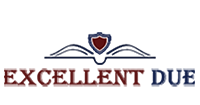英国基础会计学B124代写 fundamentals of accounting论文代写
来自英国代写的顾客授权发布的fundamentals of accounting,B124作业要求片段,为保护顾客隐私,我们不会将B124的答案或sample发布在网站,我们曾经写过B124及相关的fundamentals of accounting类型课程的很多作业及考试、如果你也需要代写这个课程的作业请联系客服WX:QQ 7878393 ,ExcellentDue的代写服务覆盖全球华人留学生,可以为英国的如:伦敦、曼彻斯特、伯明翰、爱丁堡、利物浦、利兹、布里斯托、格拉斯哥、南安普顿等城市的学生提供非常准时精湛的服务,小作业assignment代写、essay代写,享适时优惠,project、paper代写、论文代写支持分期付款,网课代修、exam代考预约时刻爆单中赶紧来撩。
1. 只要求书面回答,基于B124第一册第1、2、3、5章和第二册第1、2章。(作为对这个问题的准备,以及三个TMA中所有其他需要应用关键会计术语知识的问题,你应该熟悉使用B124 21J网站上 “资源 “下的会计词汇。你可以使用任何适当的搜索功能,但在书1-8中搜索的一个好方法是Ope …
Questions
1. Requires only written answers and is based on B124 Book 1, Chapters 1, 2, 3 and 5 and Book 2, Chapters 1 and 2. (As preparation for this question, as well as all other questions in your three TMAs that require application of knowledge of key accounting terms, you should become familiar with using the Accounting Glossary under ‘Resources’ on the B124 21J website. You may use any appropriate search function, but one good way of searching in Books 1–8 is to open the relevant PDF of a book, key in the keyboard shortcut ‘Ctrl + F’, and type in the accounting term or concept you wish to study.
a. To answer all the questions in part (a), you need to think of an example of a small (local) sole trader business which only provides services to its customers. If you know of such a real-life business, use this to answer the questions in this context. If not, do not worry, as you can use any suitable example of such a small service business.
i. To show the relevance of your answers that follow, briefly explain the service business you are going to use in answering all the questions in (a).
ii. Compared to a sole trader that is a retailer or small manufacturer, give an example of a current asset that a service business, such as the one you have identified, would not normally have to account for. Explain your answer.
iii. Because of the matching principle, expenses are recognised when they are incurred or accrued, not when cash is paid. Give an example of two expenses that your identified sole trader would present in the annual income statement, the first of which would normally be a cash expense and would be paid immediately, while the second would normally be classified as an accrued expense. Explain why you have identified your second expense as an accrued expense.
iv. Give an example of three liabilities (one identified as non-current and two as current) that such a service business might owe, and which would be recorded in its balance sheet at its accounting year end. Your answer should also explain the importance of managing any liabilities considering the owner’s unlimited liability and the business entity concept.
b. Below is a list of advantages of using a spreadsheet. For each of these five advantages, describe, specifically, how the owner/manager of a sole trader can benefit from the effective use of a spreadsheet. Your answer will be assessed on how you apply the knowledge below, in a specific example, to explain how the owner/manager can benefit from a spreadsheet.
i. Spreadsheets can be used to provide non-financial as well as financial information to the owner/manager.
ii. Updating data is easier in a spreadsheet than doing it manually.
iii. Spreadsheets can be easily used to present complex numerical data visually using graphs.
iv. The accidental amendment or erasure of cell contents can be prevented.
v. If original/raw data changes, the effect on end results may be seen quickly and easily.
2. Is based on B124 Book 2 Chapters 1, 2 (2.2) and 3 (3.1 to 3.5). (Completing Activity 1.2 in Chapter 1 of Book 2 would be excellent preparation for part (a). Completing Activities 3.2–3.4 in Chapter 3 of Book 2 would be very good preparation for parts (b)–(c). Completing the Self-assessed Question 3 (SAQ 3) at the end of Book 2 would be good preparation for part (d).)
a. Demonstrate how each of the following transactions will affect the accounting equation (Assets = Capital + Liabilities). Your answer should include a summary total for each of the Assets, Capital, and Liabilities at the end of the week. (Use a table for your answer similar to that given in Book 2 Chapter 1 Activity 1.2 so that each entry for each transaction shows the relevant amount as well as the relevant account.)
i. On 1 October Carlos started a business selling designer dog leads and collars and put £12,000 of his savings into a business bank account.
ii. On 2 October Carlos bought equipment for long-term use in the business for £3,500, paying by cheque from the business bank account.
iii. On 3 October Carlos bought leads and collars for resale costing £600, paying by cheque from the business bank account.
iv. On 3 October Carlos bought a computer for £475, paying by cheque from the business bank account.
v. On 6 October Carlos bought, on credit, leads and collars for resale costing £1,200.
vi. On 7 October Carlos took £30 from the business bank account for a personal expense.
b. During the second week of business, the following transactions took place:
i. On 8 October Carlos paid by cheque a quarter of the money owing on his payables account.
ii. On 11 October Carlos paid by cheque £400 for two weeks’ rent for his business premises.
iii. On 11 October Carlos paid by cheque £120 for two weeks’ insurance from the business bank account.
iv. By the end of the day on the 14 October (i.e. after two weeks of trade), Carlos had made sales for £2,800. Fifty per cent of the sales had been in cash and the rest on credit. Carlos had sold all his inventory after these two weeks of trade.
Using the new template below, demonstrate how the transactions in the second week will affect the expanded accounting equation (Assets = Capital + (Income – Cost of Sales – Expenses) + Liabilities. As for part (a) above, each entry for each transaction should show the relevant amount as well as the relevant account. Your answer should include a summary total for each of the Assets, Capital, and Liabilities at the beginning of the second week, i.e. from your answer to part (a), as well as at the end of the same week.
| Transactions Week 2 | Effect on A = (C + (I – C of S – E)) + L | ||
| Assets = | (Capital + (Income – Cost of Sales – Expenses)) | Liabilities | |
| £ | £ | £ | |
| Balance from Week 1 | |||
| 1 | |||
| 2 | |||
| 3 | |||
| 4 | |||
| Summary (overall effect) | |||
c. Using the information completed in the column (Capital + (Income – Cost of Sales – Expenses)) in (b), calculate (i) gross profit and (ii) net profit made by Carlos’s business in its first two weeks of trading. You do not need to provide an income statement. (Ignore any depreciation expense.)
d. Based on your answers to (a)–(c) above, prepare the balance sheet for Carlos’s Designer Dog Collars and Leads at 14 October. (The format of the balance sheet should follow SAQ 3 at the end of Book 2.)
3. Part 1 is based on B124 Book 2 Chapters 1, 2 and 3. (Completing Activity 2.1 in Chapter 2 of Book 2 and the Self-assessed Question 1 (SAQ 1) at the end of Book 2 would be excellent preparation for this question.)
a. Sima owns and manages a small business, which sells pet products to various pet outlets. Sima manages all aspects of the business, including delivery and collection of the products. The business accounts are balanced at the end of each month.
On 1 March the balances on her business accounts were as follows:
Account name Debit (£) Credit (£)
Capital 28,000
Van 13,000
Bank 11,000
Receivables 12,000
Payables 8,000
36,000 36,000
During March, the following transactions took place: (Note that all cash payments and receipts are through the business bank account.)
No. Date Amount (£) Transaction
1 2 Mar 195 Sima pays cash for advertising.
2 3 Mar 2,200 Sima pays by bank transfer the amount due to a supplier.
3 7 Mar 1,320 Sima withdraws cash for personal use.
4 9 Mar 2,800 Sima receives payment from a receivable.
5 11 Mar 72 Sima pays by debit card for petrol.
6 15 Mar 2,300 Sima receives payment from a receivable.
7 18 Mar 370 Sima pays insurance by business debit card.
8 20 Mar 1,540 Sima purchases products for resale, agreeing 30 days credit terms.
9 21 Mar 1,395 Sima invoices a new customer on 30 days credit terms.
10 30 Mar 1,650 Sima purchases products for resale and pays by cheque.
Required:
i. Set out Sima’s general ledger accounts at 1 March.
ii. Continuing on, post to the relevant accounts the ten transactions that took place in March.
iii. Balance off the general ledger accounts.
iv. Present the trial balance at 1 April.
v. Sima keeps the FIFO method of valuing the inventory of her pet products. How does this method compare with the LIFO method, at a time of rising prices, for (i) cost of sales, (ii) closing inventory and (iii) gross profit? Why do you think that LIFO is generally not accepted today by most tax authorities?
b. Set out briefly how you have approached preparing for TMA 01, and explain what you plan to do differently when preparing for TMA 02, and why this is so.
If you are a student from an English-speaking country, please feel free to contact us at [email protected] and we will provide you with an excellent writing service.
为什么选择ExcellentDue 代写

我们的留学生学术服务经验已超十年、超万人在我们的服务中受益,,我们没有任何学术丑闻,我们保护顾客隐私、多元化辅导、写作、越来越多的小伙伴选择ExcellentDue为他们解决棘手的各类作业难题,保障GPA,为留学梦助力! 知识是可以获得的东西,而思考的习惯和能力却不是那么容易学到的,学习必须和思索交替进行,要学习,即使学习苦得要命, 我们的客服团队及写手老师总是能第一时间响应顾客的各类作业需求,有些人即使有重要的事甚至带伤上场协助考试。Final季,忙的时候一天十几场考试还在继续坚持着,我知道,他们明明可以不用这么辛苦的…但是他们为了坚守承诺,为了另一端屏幕外的那一份期望,他们没有选择退缩、时刻为同学们提供最好的!这么有温度的代写还不添加备用一下?WX/QQ: 7878393

